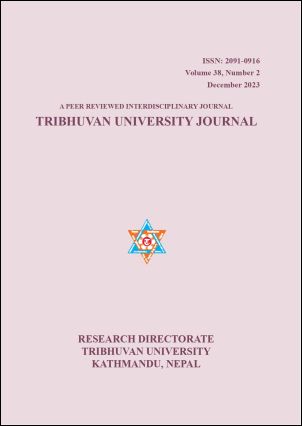Consumers' Noodle Consumption: Experiences and Practices in Nepal
DOI:
https://doi.org/10.3126/tuj.v38i2.60776Keywords:
experience of consumers, noodle consumption, qualitative studyAbstract
Instant noodles' taste, usefulness, and satiation have become trendy among people of all ages. Quick noodles are not only delicious but also generally accessible everywhere. The research aimed to examine consumers' experiences and practices regarding noodle consumption. The study combined qualitative and quantitative research methods under an exploratory research approach. The study's data gathering procedure involved a preliminary interview and a second structured survey for primary data. The original interview aimed to learn how customer’s experiences and practices about noodle consumption. The first round interview conducted with several people of different district of Kathmandu valley to comprehend noodle consumption experiences and their practices. Based on the first rounds of interviews, a structural survey questionnaire was created and circulated to more customers of different brands of noodles again in various districts of Kathmandu Valley to collect quantitative related data. The research project used a purposeful sampling method to gather information on consumer behaviors and to eat patterns related to noodles. The study revealed that consumers usually focused on purchasing noodles in Kathmandu, Lalitpur, and Bhaktapur districts. The majority of consumers eat Quick noodles as their first choice. Noodle consumption satisfied customers. Consumers placed Waiwai third, RARA second, and Chaudhary Group Quick Noodle first. Therefore, Quick brand noodles were the most popular among consumers, followed by WaiWai, Rara, 2PM, Current Rumpum, and Preeti.
Downloads
Downloads
Published
How to Cite
Issue
Section
License
This license enables reusers to distribute, remix, adapt, and build upon the material in any medium or format for noncommercial purposes only, and only so long as attribution is given to the creator.
© Center for Research, Tribhuvan University

